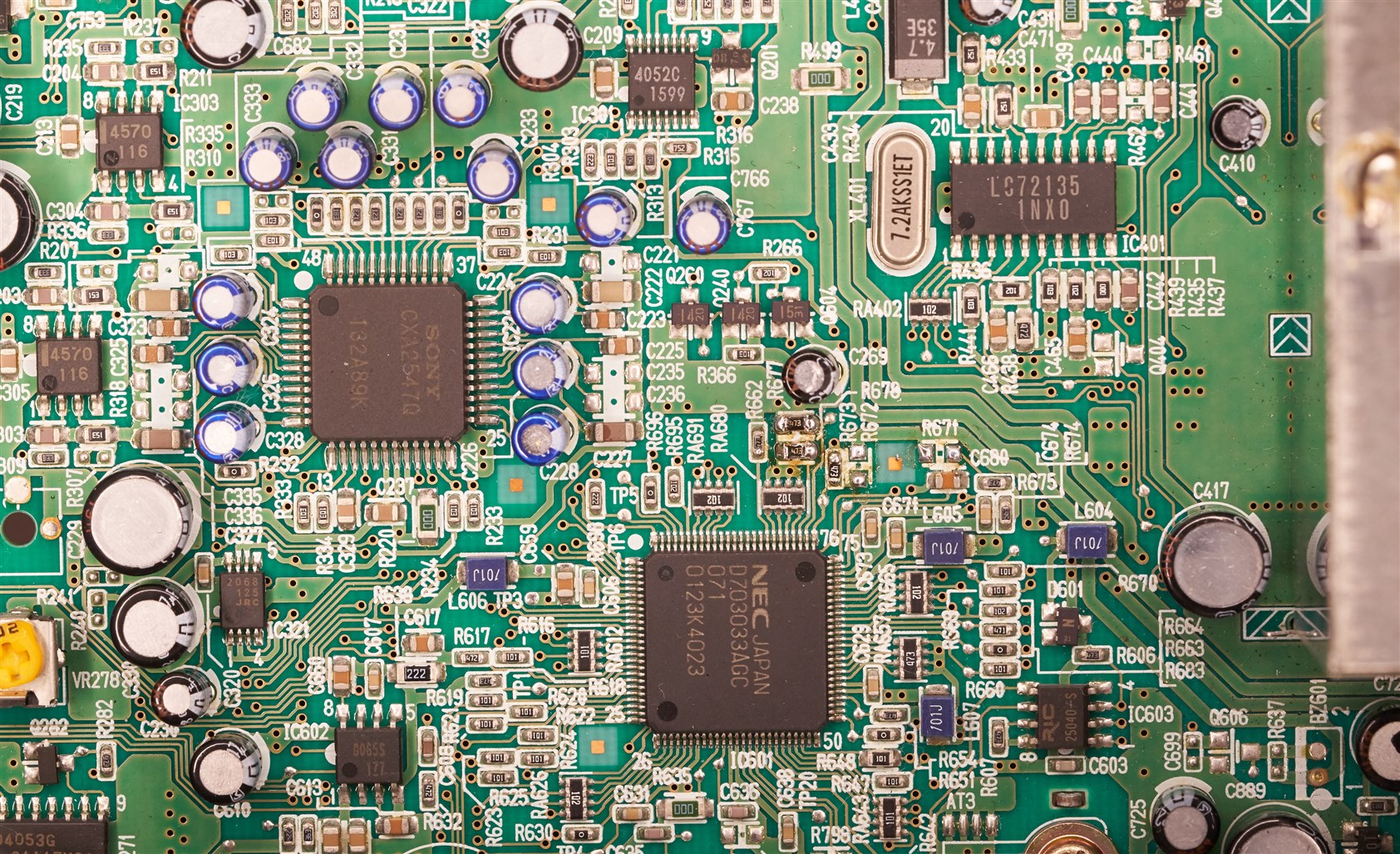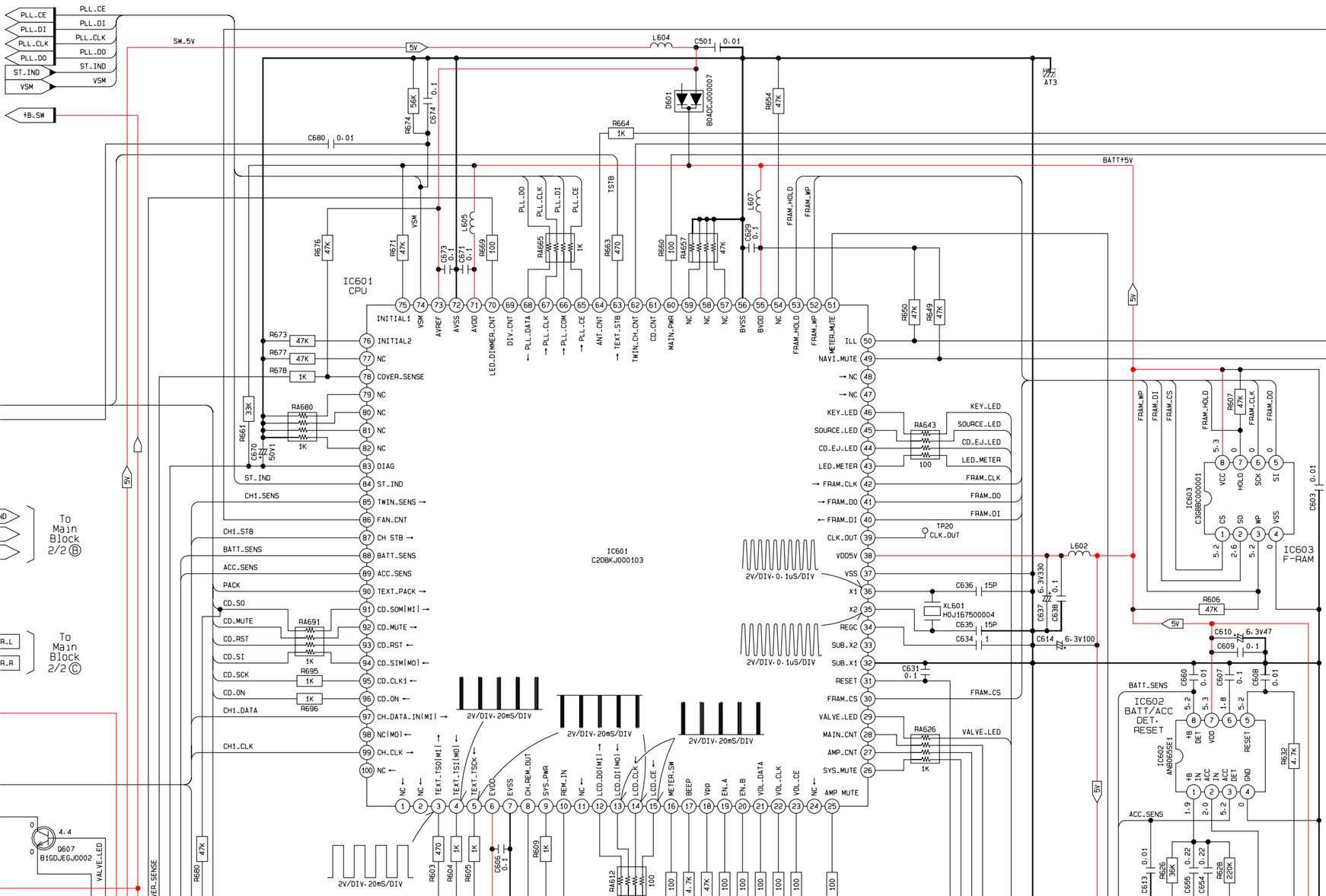Introduction
I was recently given a car stereo to fix, and it's possibly the most good-looking piece of equipment I've seen in a long while!
I figured I would document the repair project a bit, since there's not a lot of information on the Internet about it, and it's sometimes nice to see device internals.
The video shows the stereo.. the owner clearly has good music taste, the Django Unchained music CD was already inside:
This model was released around 2001 in Japan, and cost about $760 USD when new. There is a D-suffix and a K-suffix version (the D-suffix version is silver).
The MiniDisc Wiki has a bit of information on it.
Connections
The diagram here shows the pinout.

The connectors and cables were dirty/greasy as expected, and had bad connections. I replaced with Molex Mini-Fit Jr (reviewed here) since I had the crimp tool for that, and they are nice connectors for this application.

The vehicle uses an ISO 10487 connector and so I attached the mating Mini-Fit Jr connectors to that too. I also made up some test cables so that I could attach a power supply and a speaker or speaker simulator.

The new connectors did the trick, and the system pretty much worked apart from the MiniDisc player.
MiniDisc Player
The MiniDisc player doesn't function but it may be a fault with the disc I was using. If you've never seen a MiniDisc before, they are really tiny, in my opinion near-ideal storage medium for music before Flash memory became cheaper.

Although the mechanism works, I reckon the optical components of the MiniDisc player may have dust on them, since the stereo had some dirt inside. I blasted with some canned air, but didn't take this mechanism further apart. Hardly anyone uses MiniDisc anymore so I don't think it's worth the repair effort.

Japanese FM Band
A more severe issue is that the unit is a grey import, and doesn't support UK FM operation. The tuner is set to the Japanese frequencies. Taking a peek at the circuit board shows the FM synthesiser (Sanyo LC72135), main microcontroller (the NEC chip visible in the photo below), and the FM tuner module (the long metal can partially visible on the right side edge of the photo).

There are a bunch of resistor positions that perhaps may select the region, and you can see a bit of flux on the photo where I attempted to solder resistors. Unfortunately I didn't figure it out; with all resistor combinations that I tried, the frequency band did not change. There is a pinhole reset button on the front panel of the car stereo, and I pressed that each time I made a resistor change, but it only seems to reset the device without wiping its configuration.
I suspected that the resistors to change were those that were 0805-sized rather than 0603-sized.
I don't have a schematic, but the ElectroTanya website offered a service manual for the CQ-TX5500, so I looked at that instead. I experimented with the resistors highlighted here:

A bit more of the schematic from that CQ-TX5500 model (click to zoom):

The configuration is likely stored in the FRAM chip visible to the right of the NEC microcontroller chip. I could desolder it and extract the contents, but there's only finite time to try to repair this car stereo, and I didn't do this. Even if I succeeded in changing the band in this manner, it still may not work if the VCO connected to the synthesizer chip needs adjustment/component changes. For now, if the owner wishes to use the FM band in the UK, there is the possibility to purchase a cheap band converter device that connects to the antenna socket (the wrong frequency will be displayed however). It's an ugly solution, but it is a solution.
Summary
With a bit of clean-up the car stereo functions adequately. It's a 20-year old car stereo but there's plenty of life in it, it is well made. I just wish Panasonic had published some information to help change the FM band, but it is pretty normal for manufacturers not to do that, since it affects their sales arrangements in different regions. I still need to give it a proper listen, but it sounds great, and looks awesome. This will be returned to the owner soon.
Thanks for reading!

Top Comments
-

Jan Cumps
-
Cancel
-
Vote Up
0
Vote Down
-
-
Sign in to reply
-
More
-
Cancel
Comment-

Jan Cumps
-
Cancel
-
Vote Up
0
Vote Down
-
-
Sign in to reply
-
More
-
Cancel
Children